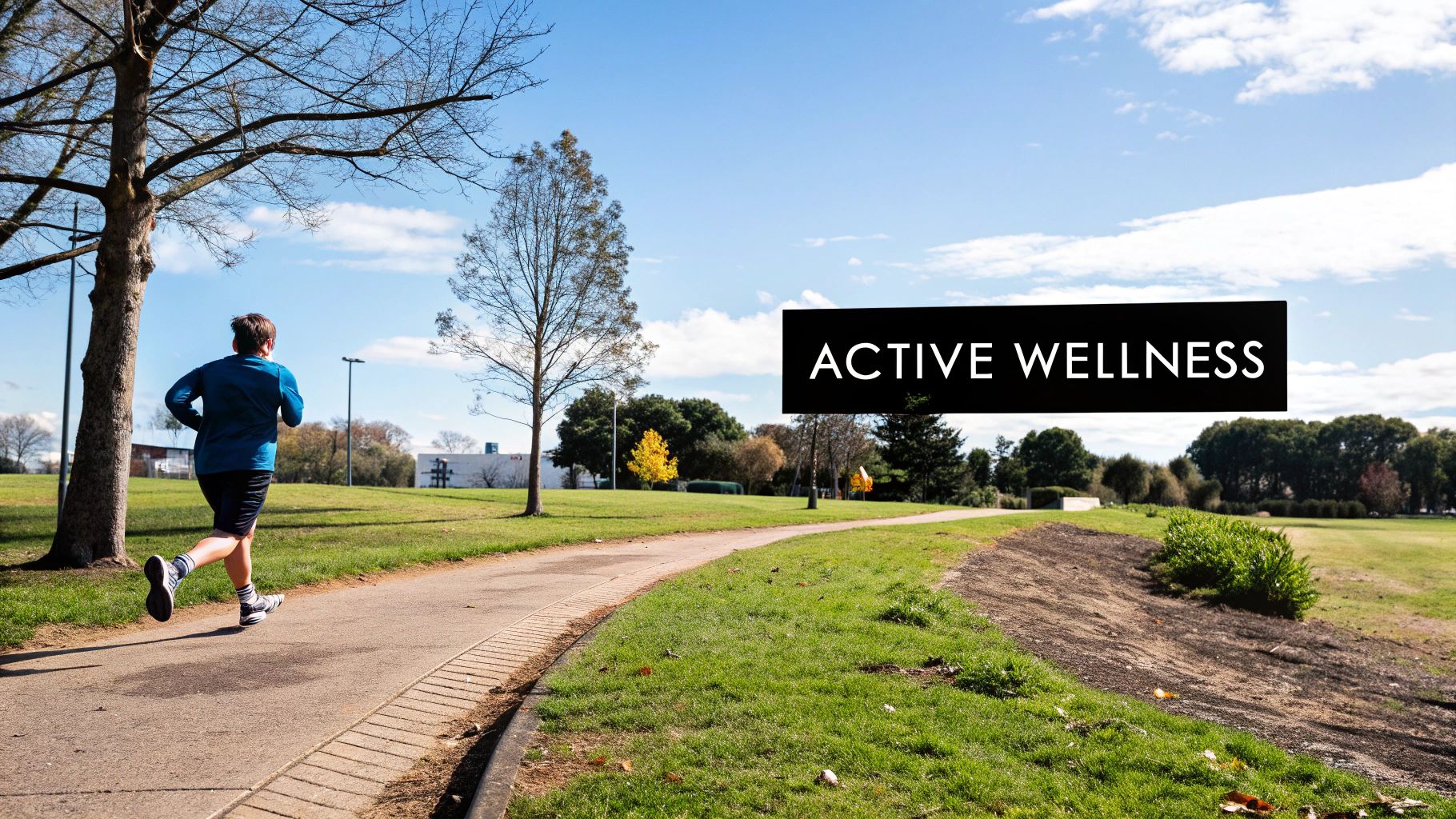The Science Behind Your Desire: What Drives Libido

Your libido, or sex drive, isn’t static. It naturally changes throughout life, influenced by a combination of biological, psychological, and social elements. Understanding this complex interaction is the first step toward understanding how to boost your sex drive.
The Hormonal Orchestra
Hormones are at the core of sexual desire. Testosterone, often linked to men, is vital for libido in both sexes. It fuels desire and arousal. Estrogen, crucial for women’s reproductive health, also contributes to vaginal lubrication and overall sexual function.
Even minor hormonal shifts can impact libido. Women often experience changes during pregnancy, postpartum, and perimenopause/menopause due to hormone fluctuations. Men may experience a decline in testosterone with age, potentially affecting their desire.
Beyond Hormones: Stress, Relationships, and Medications
Hormones are foundational, but other factors significantly influence libido. Chronic stress can dramatically reduce sex drive. The stress hormone cortisol can suppress testosterone and estrogen, diminishing desire.
Relationship dynamics also play a key role. Intimacy, connection, and emotional safety can enhance libido, while conflict and unresolved issues can have the opposite effect.
Certain medications can also impact sexual desire. Some antidepressants, antihistamines, and blood pressure medications list decreased libido as a side effect.
Hormone therapies have shown promise in increasing libido, especially for menopausal women. Studies show that estrogen-only therapy can improve sexual desire in postmenopausal women. Combining estrogen with testosterone can further enhance desire and sexual function. This highlights the importance of hormone balance, particularly during menopause.
Addressing underlying emotional or psychological factors, managing stress, and understanding medication side effects are key to a holistic approach for boosting desire.
Movement That Ignites: Exercise Your Way to Higher Desire

Physical activity offers a wealth of benefits, including a positive impact on libido. Exercise isn’t just about physical wellness; it establishes a biological basis for a healthier sex drive. This connection goes beyond simply feeling confident in your appearance.
The Biology of Exercise and Desire
Exercise has profound effects on the body that influence libido both directly and indirectly. First, it improves blood flow, which is essential for arousal in both men and women. This includes improved circulation to the genital regions.
Physical activity also triggers the release of endorphins, natural mood boosters that increase feelings of well-being and can enhance desire.
Furthermore, regular exercise helps balance key hormone levels, including testosterone and estrogen. Maintaining this hormonal balance is essential for sexual desire. Studies show that regular physical activity can increase testosterone, a significant factor in libido for both genders. This can lead to improved arousal and greater sexual satisfaction.
Recent research emphasizes the impact of lifestyle changes, like exercise, on libido. Studies indicate that individuals who engage in regular physical activity report higher sex drives. For instance, research highlights the positive effects of exercise on sexual function and satisfaction, directly influencing libido. Learn more about the connection between exercise and libido here . This also applies to practices like mindfulness and yoga, which help reduce stress, a known inhibitor of libido.
Choosing the Right Movement for You
Not all exercise is equal when it comes to boosting libido. While all movement is good, some types have a stronger link to increased desire.
- Cardiovascular Exercise: Activities like running, swimming, or cycling improve circulation, boost endorphins, and contribute to hormone regulation.
- Strength Training: Lifting weights can increase testosterone levels, positively impacting libido in both men and women.
- Mind-Body Practices: Yoga and Tai Chi can reduce stress and improve body awareness, fostering a greater connection with your physical self and potentially increasing desire.
Finding an enjoyable and sustainable exercise routine is crucial. Start small and gradually increase the intensity and duration of your workouts. Consistency is key, more so than pushing yourself too hard initially.
To help you understand the different impacts of various exercise types, let’s take a look at the following table:
Exercise Types and Their Impact on Libido
This table compares different exercise modalities and their specific effects on factors that influence sexual desire.
| Exercise Type | Impact on Hormones | Stress Reduction | Body Image | Overall Libido Effect |
|---|---|---|---|---|
| Cardiovascular Exercise (running, swimming, cycling) | Improves circulation, boosts endorphins, helps regulate hormones like testosterone and estrogen | Moderate stress reduction through endorphin release | Can improve body image through weight management and improved fitness | Can positively influence libido by improving blood flow, mood, and hormonal balance |
| Strength Training (weightlifting) | Increases testosterone levels, which can positively influence libido in both men and women | Can reduce stress through a sense of accomplishment and physical exertion | Can significantly improve body image through muscle development and toning | Can positively impact libido, especially in conjunction with other exercise types |
| Mind-Body Practices (Yoga, Tai Chi) | Can help regulate hormones through stress reduction | Significant stress reduction through mindful movement and meditation | Can improve body image through increased flexibility, balance, and body awareness | Can positively impact libido by reducing stress and improving body image and awareness |
As you can see, different types of exercise offer unique benefits that can positively impact your libido. By incorporating a variety of these modalities into your routine, you can maximize the positive effects on your overall well-being, including your sexual health.
Realistic Expectations and Debunking Myths
While the link between exercise and libido is evident, it’s important to have realistic expectations. You won’t experience a dramatic increase in desire overnight. The benefits of exercise are cumulative, and consistency is crucial for long-term results.
It’s also vital to debunk common exercise myths related to libido. Excessive exercise can actually decrease libido due to hormonal imbalances and fatigue. Listening to your body and finding a balanced approach is crucial. This means finding a routine that challenges you without causing exhaustion or burnout. This balance is especially important for maintaining healthy hormone levels, which are central to libido.
Eating for Desire: Nutrition Strategies That Spark Passion

Just as exercise fuels desire, the food you eat plays a vital role in your sexual satisfaction. This section explores the science-backed connection between nutrition and libido, examining how specific nutrients can influence your intimate life. We’ll discover how dietary choices can either ignite or diminish passion.
Key Nutrients for a Healthy Libido
Certain nutrients are crucial for hormone production and overall sexual health. Zinc, for instance, is essential for testosterone production, a key hormone for libido in both men and women. Good sources of zinc include oysters, beef, and pumpkin seeds.
Another important nutrient is L-arginine, an amino acid that promotes nitric oxide production. Nitric oxide improves blood flow, which is vital for arousal. Incorporating L-arginine-rich foods like nuts, seeds, and red meat can support healthy sexual function.
Omega-3 fatty acids are also key players. They promote cardiovascular health, which is essential for good circulation, directly impacting arousal. Fatty fish, flaxseeds, and walnuts are excellent sources of these beneficial fats. These nutrients work together to support hormonal balance and blood flow, both essential for a healthy libido.
Separating Fact From Fiction: Supplements and Libido
Many supplements promise to boost libido, but it’s crucial to separate fact from fiction. While some show promise, others lack scientific evidence. Maca root and tribulus terrestris are two popular examples. Some research suggests maca root may positively influence sexual desire, while studies on tribulus terrestris are less conclusive. Always consult with a healthcare professional before starting any new supplements, especially if you have other health conditions or take medications.
Dietary Patterns and Their Impact
Specific dietary patterns can also influence libido. The Mediterranean diet, rich in fruits, vegetables, whole grains, and healthy fats, supports cardiovascular health, which can, in turn, improve sexual function. A plant-based diet, emphasizing whole foods and minimizing processed items, can also contribute to better overall health and potentially have a positive impact on libido.
However, restrictive diets can sometimes lead to nutrient deficiencies that negatively affect sexual desire. A balanced and varied diet that provides all the necessary nutrients is essential for optimal sexual health. Maintaining a healthy weight is also important, as obesity can contribute to hormonal imbalances that negatively affect libido.
Practical Meal Planning for Increased Desire
Integrating libido-boosting foods into your diet doesn’t have to be complicated. Small, sustainable changes can make a significant difference.
- Prioritize whole, unprocessed foods: Focus on fruits, vegetables, lean proteins, and whole grains.
- Incorporate zinc-rich foods: Include oysters, beef, and pumpkin seeds regularly.
- Boost L-arginine intake: Add nuts, seeds, and red meat to your diet.
- Don’t neglect omega-3s: Consume fatty fish, flaxseeds, or walnuts.
Timing certain foods can also enhance their effects. For example, a zinc-rich meal a few hours before intimacy might provide a boost. Remember, building healthy habits takes time. Focus on gradual, sustainable changes for long-term improvements in your libido.
Calm Mind, Passionate Body: Stress Management for Desire

Chronic stress can significantly impact our overall well-being, and libido is no exception. This mind-body connection is a biochemical reality. Stress hormones can directly interfere with the pathways that govern sexual function and desire. Managing stress is not only beneficial for mental health but also crucial for a fulfilling intimate life.
The Stress-Libido Connection
When stressed, your body releases cortisol, the primary stress hormone. While essential for short-term threat responses, consistently high cortisol levels can suppress sex hormones like testosterone and estrogen. This hormonal imbalance can lead to a decreased desire for intimacy.
Stress also affects sleep, energy levels, and mood—all vital factors influencing libido. For instance, poor sleep can worsen stress, creating a cycle that further impacts desire.
Additionally, stress can hinder the ability to connect with a partner, diminishing intimacy and the desire for physical connection. This is especially true for those juggling demanding jobs, family responsibilities, or other life challenges, making it difficult to prioritize intimacy, which can further lower libido.
Interestingly, despite the negative effects of stress on libido, overall sexual satisfaction and well-being have improved in recent decades. A Durex study revealed that 57% of sexually active individuals reported feeling emotionally satisfied in 2024, a 12% increase since 2006. Physical satisfaction also rose by 21% to 56% in the same period. This positive trend highlights the importance of increased acceptance of sexual diversity and better access to sexual health products. These improvements emphasize the value of a supportive environment for sexual well-being.
Stress Management Techniques for a Healthier Libido
Several effective techniques can help address stress-related libido issues. Targeted breathing exercises can calm the nervous system and reduce cortisol levels. This helps restore hormonal balance, creating a better environment for desire.
Mindfulness practices, especially those adapted for intimate settings, can strengthen connection and reduce performance anxiety, which can interfere with arousal. These practices encourage focusing on the present moment, enabling individuals to fully experience the sensations of intimacy.
Building Resilience and Connection
Couples who successfully navigate stressful times without sacrificing intimacy often employ specific strategies. Open communication about stress triggers and their impact on desire is essential. This fosters understanding and mutual support.
Implementing stress management routines together, such as regular exercise or shared relaxation activities, strengthens the relationship and safeguards libido. This shared commitment to well-being fosters intimacy and maintains a healthy sexual connection.
Identifying personal stress triggers is crucial for developing effective coping mechanisms. This self-awareness allows for proactive stress management and protects libido. Some techniques provide immediate relief, while others offer longer-term benefits. Experimenting with different approaches is key to finding what works best. By prioritizing stress management, individuals can reclaim their sexual vitality and enjoy a more fulfilling intimate life.
Talking Your Way to Passion: Communication That Enhances Desire
Open and honest communication is often cited as the cornerstone of a healthy relationship. Its impact on libido is significant; it can be the best way to boost intimacy, especially in long-term relationships where unspoken desires and unmet needs can quietly diminish passion. This section explores how communication patterns directly influence desire, offering practical strategies for rekindling the spark through meaningful conversation.
The Power of Vulnerability and Emotional Safety
Emotional intimacy and physical intimacy are deeply connected. Creating a safe space for vulnerability is crucial for enhancing desire. This involves actively listening to your partner, validating their feelings, and expressing your own needs and desires without fear of judgment. When both partners feel comfortable sharing their innermost thoughts and feelings, a deeper connection develops, naturally increasing physical desire. This emotional safety net allows for a more authentic and pleasurable sexual experience.
Practical Frameworks for Discussing Intimate Needs
Talking about sex can be difficult, but having a structure for these conversations can simplify things.
- Start by acknowledging the difficulty: Begin by recognizing that these conversations can be uncomfortable. This establishes a shared understanding and lessens pressure.
- Use “I” statements: Concentrate on expressing your own feelings and needs instead of blaming or criticizing your partner. For instance, say “I feel more connected when we are physically intimate,” instead of “You never initiate sex.”
- Be specific: Articulate your desires, preferences, and boundaries clearly. Vagueness can cause misunderstandings and frustration.
- Listen actively: Give your partner your undivided attention when they are speaking. Reflect back what you hear to ensure you understand their perspective.
To help facilitate these conversations, and to further explore the connection between communication and intimacy, consider resources like the Gottman Institute, Gottman Institute . They offer valuable insights and practical tools for improving communication in relationships.
Rebuilding Emotional Safety: Techniques From Couples Therapy
Therapists often suggest specific techniques for rebuilding emotional safety:
- Non-sexual touch: Regular physical affection, such as cuddling, hand-holding, or back rubs, can strengthen emotional intimacy without the pressure of sexual performance. This reinforces closeness and security.
- Vulnerability exercises: Sharing personal experiences and fears can nurture a deeper connection and trust. This might involve expressing insecurities, past hurts, or hopes for the future.
These exercises can be especially helpful when addressing communication barriers that frequently dampen desire. Timing is critical for these conversations. Choose a moment when both partners are relaxed and receptive, not during times of conflict or stress.
Understanding the dynamics of healthy relationships and effective communication can often be enhanced with the support of professional guidance. Resources like those offered by the American Association for Marriage and Family Therapy, AAMFT , can help connect individuals and couples with qualified therapists.
To further understand the nuances of intimacy and desire, consider the insights offered in books such as “Come as You Are” by Emily Nagoski, Come as You Are
Before we discuss overcoming communication barriers, let’s look at some specific communication approaches:
To better understand how different communication strategies can address specific concerns related to libido, let’s examine the following table:
Communication Approaches for Enhancing Intimacy
This table outlines different communication strategies and their effectiveness in addressing specific libido-related concerns.
| Communication Approach | Best For | Potential Challenges | Success Rate (Illustrative) |
|---|---|---|---|
| Openly expressing desires and fantasies | Increasing excitement and exploration | Fear of judgment or rejection | 70% |
| Initiating conversations about sexual needs | Addressing unmet needs and mismatched desires | Difficulty initiating or feeling comfortable | 60% |
| Active listening and validating partner’s feelings | Building emotional intimacy and understanding | Misinterpretations or defensiveness | 80% |
| Using “I” statements to express concerns | Avoiding blame and promoting constructive dialogue | Difficulty expressing vulnerability | 75% |
| Scheduling regular time for intimacy | Prioritizing physical connection and overcoming scheduling conflicts | Feeling pressured or lacking spontaneity | 55% |
This table illustrates how various communication techniques can be applied to address common challenges in intimate relationships. The success rates are illustrative examples and can vary significantly based on individual circumstances. Open communication, active listening, and a willingness to be vulnerable are generally associated with higher success rates in enhancing intimacy.
Overcoming Communication Barriers and Managing Expectations
Communication barriers, such as defensiveness, criticism, or stonewalling, can significantly affect libido. Learning to recognize these patterns and develop healthier communication habits is essential for a thriving intimate life.
It’s important to have realistic expectations. Improved communication won’t magically fix your sex life overnight. Rebuilding intimacy and desire takes time and consistent effort. However, even small changes in communication can have a positive ripple effect, leading to a more fulfilling and passionate relationship. Be patient and acknowledge the progress you make along the way.
Sleep Your Way to Better Sex: Rest and Desire Connection
The link between quality sleep and a fulfilling sex life is stronger than many realize. It goes beyond simply having enough energy for intimacy. Sleep actually regulates the hormones responsible for sexual desire. By understanding this connection, you can unlock a more satisfying intimate life.
The Hormonal Dance of Sleep and Libido
Sleep deprivation throws off the delicate hormonal balance essential for a healthy libido. It reduces testosterone production, a crucial hormone for sexual desire in both men and women. At the same time, lack of sleep increases cortisol, the stress hormone. High cortisol levels further suppress sexual function. This combination significantly impacts your sex drive, leaving you feeling less interested in sex and less responsive to your partner.
Think of your body’s hormonal system as an orchestra. When you’re well-rested, the instruments play together beautifully, creating a melody of desire. But sleep deprivation throws the conductor off, making the music dissonant, and the desire fades.
Optimizing Your Sleep for Better Sex
Improving your sleep can significantly impact your libido. Here are a few practical steps:
-
Optimize Your Sleep Environment: Make sure your bedroom is cool, dark, and quiet. An ideal temperature is around 65 degrees Fahrenheit, which encourages deeper, more restorative sleep.
-
Establish a Relaxing Evening Routine: Develop a pre-sleep ritual that tells your body it’s time to wind down. This could include a warm bath, reading a book, or some light stretching.
-
Manage Technology Use: Limit screen time before bed. The blue light emitted from devices like phones and tablets interferes with the production of melatonin, a hormone that regulates sleep.
These simple changes can make a real difference in your sleep quality, leading to more balanced hormones and a greater desire for intimacy.
Identifying and Addressing Sleep Disorders
Sometimes, poor sleep is caused by underlying sleep disorders, like sleep apnea. This condition, marked by pauses in breathing during sleep, disrupts restful sleep and can contribute to low libido. If you suspect you might have a sleep disorder, consult a healthcare professional. Addressing these underlying issues can dramatically improve your sleep and, as a result, your sex drive. This is particularly important as untreated sleep apnea can have serious long-term health consequences.
Making Sleep a Priority, Even When Life Gets Busy
Prioritizing sleep, even during stressful times, is key to maintaining a healthy libido. Short-term sleep deprivation can immediately affect desire, while chronic sleep problems can cause long-term hormonal imbalances and decreased sexual function. Even small changes to your sleep habits, like setting a consistent sleep schedule, developing a relaxing bedtime routine, or reducing caffeine intake in the afternoon and evening, can make a noticeable difference in your sex life. By making sleep a priority, you’re investing in your overall well-being, including your sexual health.
Beyond DIY: When and How to Seek Professional Support
While lifestyle changes like regular exercise, a balanced diet, and effective stress management can significantly improve libido, sometimes professional guidance is necessary. This is especially true if you’ve already incorporated these changes and haven’t seen the desired results. This section will help you determine when it’s time to seek expert help for persistent low desire.
Recognizing When to Seek Help
Persistent low libido can sometimes be a symptom of underlying medical issues requiring professional attention. For example, consistently low desire despite lifestyle changes could indicate a hormonal imbalance, a side effect of medication, or even an undiagnosed health condition.
Additionally, psychological factors like anxiety, depression, or relationship difficulties can significantly impact libido. These often benefit from professional support to address them effectively. If you suspect these factors contribute to your low desire, consider seeking therapy or counseling.
Choosing the Right Healthcare Professional
Navigating the healthcare system for sexual concerns can feel overwhelming. Different specialists address various aspects of libido issues.
- Gynecologists or Urologists: These specialists can address physical or hormonal concerns, such as vaginal dryness or low testosterone. They may perform physical exams, order blood tests to check hormone levels, or recommend treatments like hormone therapy.
- Endocrinologists: If hormonal imbalances are suspected, an endocrinologist can provide specialized care and treatment options. These specialists focus on the endocrine system, which regulates hormone production.
- Therapists or Counselors: These mental health professionals can address psychological factors impacting libido, such as anxiety, depression, or relationship issues. They can provide individual or couples therapy, equipping you with coping mechanisms and communication strategies.
- Sex Therapists: These specialized therapists focus specifically on sexual health concerns. They can help address issues like low desire, sexual dysfunction, or relationship challenges impacting intimacy. American Association of Sexuality Educators, Counselors and Therapists (AASECT) is a good resource for finding certified sex therapists.
Choosing the right combination of professionals depends on your individual circumstances. You may find it beneficial to consult multiple specialists to address all contributing factors.
Preparing for Your Appointment and Asking the Right Questions
Preparation is key to getting the most out of your appointment. Keep a journal tracking your libido levels, any accompanying symptoms, and potential triggers. This information will be invaluable to your healthcare provider.
Don’t hesitate to ask questions. Here are some examples:
- What tests are needed to diagnose the cause of my low libido?
- What are the different treatment options available?
- What are the potential side effects of each treatment?
- How long will it take to see results?
- Are there lifestyle changes I can make in conjunction with treatment?
Navigating Treatment Options: Medical, Psychological, or Integrated Care
Treatment approaches vary depending on the underlying cause of low libido. Medical treatments might include hormone therapy, medication adjustments, or addressing other medical conditions. Psychological approaches, such as therapy or counseling, can help address emotional and relationship factors.
Integrated care, combining medical and psychological approaches, often provides the most comprehensive and effective treatment. This approach addresses the complex interplay of physical and emotional factors influencing libido. It’s crucial to discuss all available options with your healthcare provider to determine the most suitable course of action based on your individual needs.
Want to learn more about enhancing intimacy and understanding the female body? Check out G-Spot 101 for in-depth information and resources: G-Spot 101
The post How to Increase Libido: 7 Science-Backed Tips appeared first on G Spot 101 .
Intimate Tickles found this article quite interested, and we thought you might to. We give all the credit for this article to gspot. Click Here To Read This Article From It's Original Source